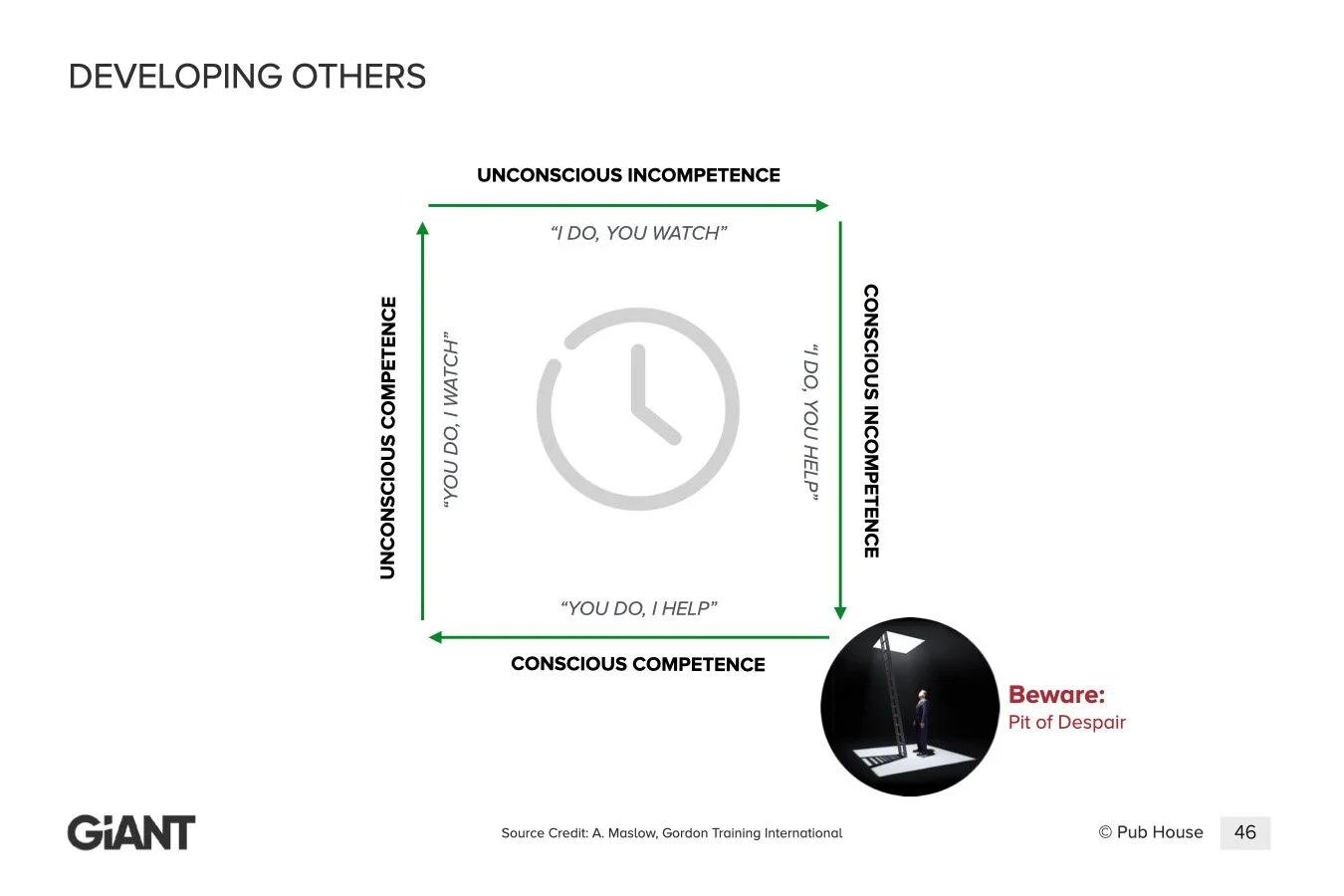Are You Equipping Your Team to Succeed?
Welcome to another Toolkit Tuesday! Every week, our goal is to give you a practical leadership tool to put in your toolkit.
So There We Were…
Steve and I volunteer with an organization called Xcel Strategies that mentors young people and fuels them with purpose through real-world skills. A lot of the students we work with have never used a hammer, a tape measure or a power tool. So when we introduce them to something like building a wheelchair-accessible picnic table, we don’t just hand them the plans and a pile of tools and say, “Good luck.” That would be a recipe for danger and probably a very wobbly table.
Instead, we start slow. At first, we explain what we are doing as they just watch us measure, cut and build. Then we invite them to help with the table saw or measure and mark the boards. Over time we shift the responsibility. By the end of the school year, we’re standing back, handing them the plans and watching them lead the build. We only step in to offer guidance, encouragement and the occasional course correction.
It was pretty incredible to watch. They didn’t just build tables. They built confidence. And we got to walk them all the way around the Developing Others tool.
The Challenge
Most leaders want to grow their people, but they often do it accidentally. They hire someone, hope they’re a rock star and then feel frustrated or burned out when they’re not. Or worse, they hand someone too much too soon and the person crashes. That cycle leads to high turnover, low morale and wasted potential.
Leadership without a development process is just gambling with your people.
The Tool: Developing Others
The Developing Others tool gives leaders a clear and repeatable way to grow people from inexperience to mastery. It outlines four stages of development:
Unconscious Incompetence – “I do, you watch.”
Conscious Incompetence – “I do, you help.”
Conscious Competence – “You do, I help.”
Unconscious Competence – “You do, I watch.”
Each stage has a role for both the learner and the leader. The key is calibrating support and challenge as people grow so they stay confident, engaged and capable instead of overwhelmed or under-challenged.
The process begins in the top-left corner of the square. The learner, whether a new team member, employee, student or apprentice, moves around the outside of the square. The leader or expert works from the inside, adjusting their level of involvement based on the learner’s stage of growth.
The clock in the middle reminds us that development takes time. Skill, judgment and confidence don’t show up overnight.
Note: Next week’s Toolkit Tuesday will take a closer look at one of the most critical moments in this process: the Pit of Despair. You’ll learn what it is, why it matters and how to lead people through it without losing them.
Why This Matters Now
If you're leading others, you’re not just responsible for results. You’re responsible for reproducing capability. When you apply this tool, you reduce confusion, speed up growth and build a team that’s confident, competent and capable of leading without constant oversight. It transforms delegation from a gamble into a strategy.
The Result
Leaders who develop others with intention create momentum. Instead of bottlenecking around one or two over-functioning people, the whole team levels up. Engagement rises. Turnover drops. You stop burning people out and start building them up.
And that means your impact multiplies.
Take Action
Choose one person you're developing and identify what stage they’re in. Then adjust your support and challenge this week to match where they really are. Not where you wish they were.
Want to build a team that grows leaders, not just doers? Let’s talk about how to build a leadership pipeline in your business.
Closing the Loop
That group of incredible high school students didn’t just learn how to use tools. They learned how to build something that mattered. By the end of the program, they had completed two wheelchair-accessible picnic tables and two standard ones, now proudly in use by students at their school. It was the full Developing Others process in action and the results will outlast the lessons.
Lead hard!

